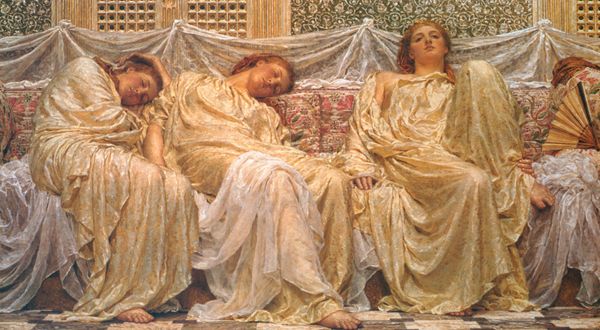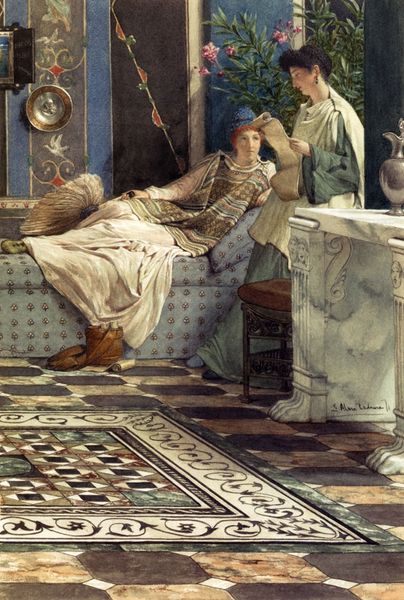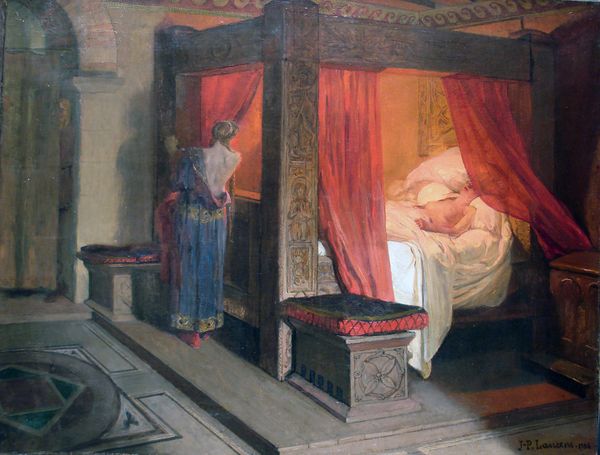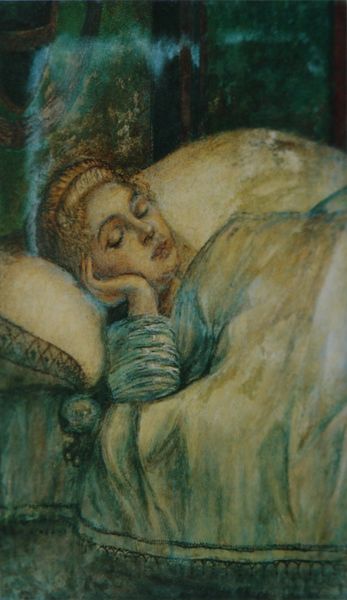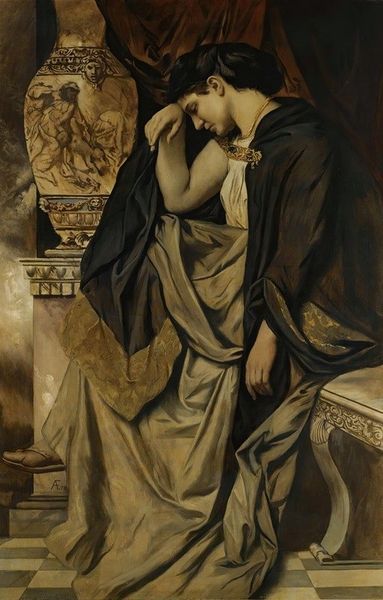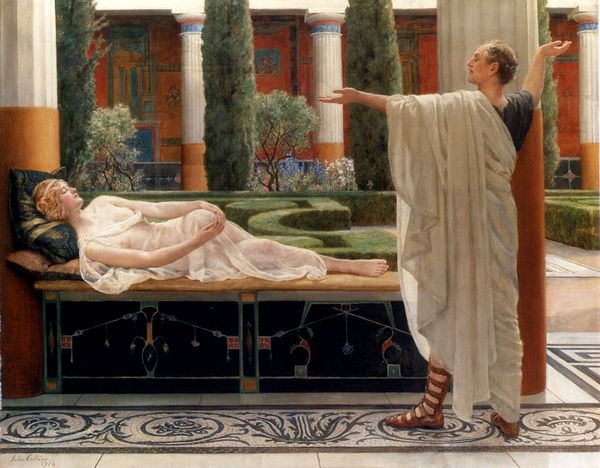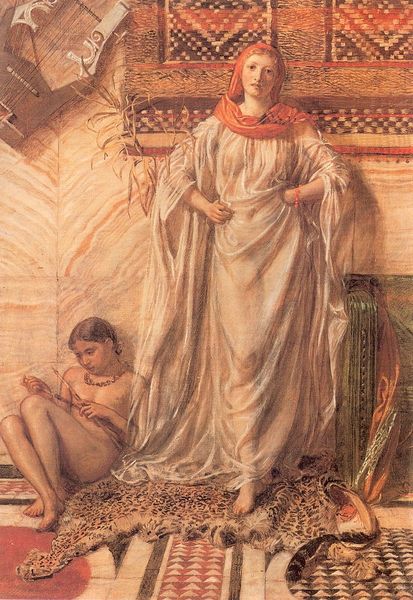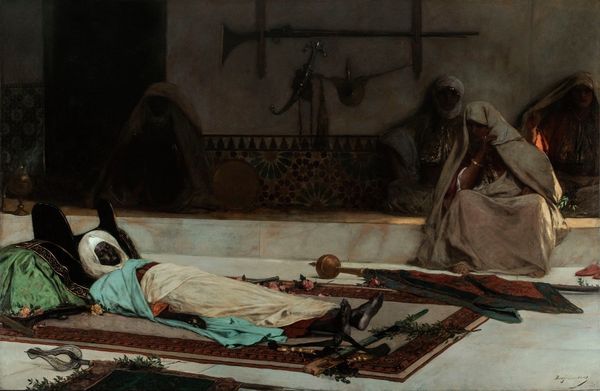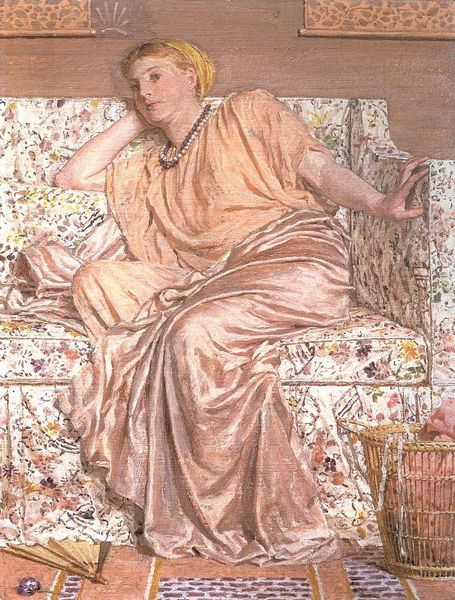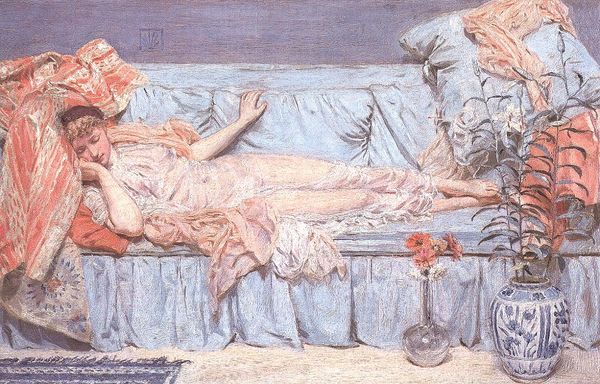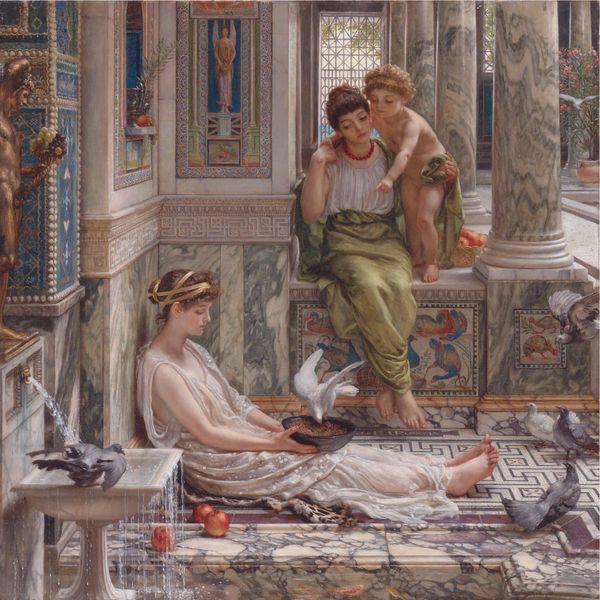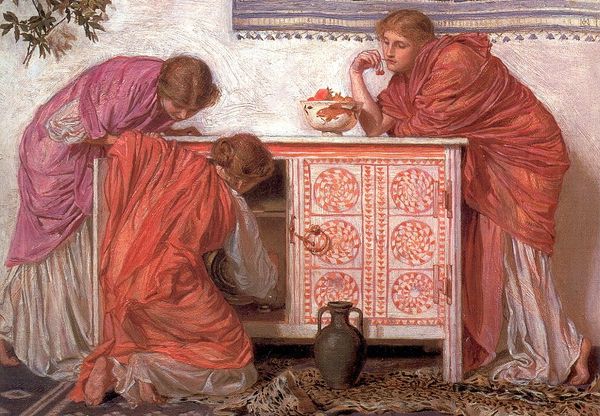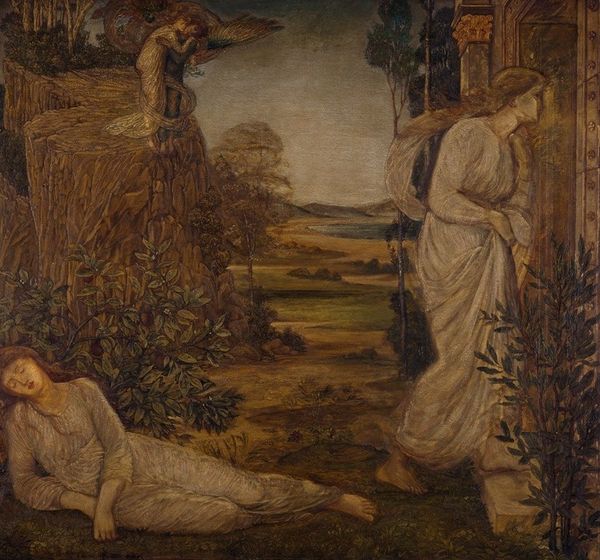
#
candid
#
festivity
#
collage layering style
#
festival photography
#
festivity and dance
#
performing
#
culture event photography
#
cultural celebration
#
person photography
#
ethnic design
Dimensions: 50.8 x 29.2 cm
Copyright: Public domain
Editor: Albert Joseph Moore painted "Apples" in 1875. It seems to depict two figures in repose. The muted colors and horizontal composition create a sense of tranquility. What do you see in this piece? Curator: The immediate symbolic connection is the apple itself, weighted with its complex history. It represents temptation, knowledge, and immortality across cultures. The sleeping women could be understood as symbols of a pre-awakening state, dreaming of what is to come. Notice how Moore uses the classical drapery; this creates a direct lineage with idealized forms of the past. What does the arrangement of objects suggest to you? Editor: I guess that the placement of the vases and the fan seems intentional, like they might be anchoring the composition, and they are also symbols of the classical past... or maybe beauty in general. Curator: Precisely! Vases, historically, aren't just functional. They often contain offerings, memories, aspirations. Their static presence contrasts with the languid pose of the women. Does their sleep feel peaceful or burdened? The repetition of shapes also draws attention to the possibility of idealized female forms represented within the vase. The symmetry itself echoes an older world, even. Editor: It does seem both peaceful and burdened... like there's a tension between rest and some kind of expectation. It also feels interesting that a simple motif of fruit opens to broader symbolical themes. Curator: Moore subtly layered various visual cues and metaphors. Understanding the cultural significance of seemingly ordinary elements unlocks richer readings within a simple painting of sleeping women. What might be the most relevant cultural influence here, you think? Editor: Maybe it's his engagement with both classicism and aestheticism. That conflict comes through in the work. Curator: Exactly. The work carries multiple potential readings! The dialogue itself brings out the symbolism, the connection to cultural memory, and emotional undercurrents. Editor: Thank you. I feel I understand much more now the image and the themes, and I'll go and research this painter to learn more.
Comments
No comments
Be the first to comment and join the conversation on the ultimate creative platform.
